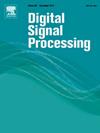A lightweight visual detection method for maritime autonomous surface ships in port area navigation
IF 2.9
3区 工程技术
Q2 ENGINEERING, ELECTRICAL & ELECTRONIC
引用次数: 0
Abstract
Accurate and real-time ship detection in complex port environments is critical for the safe navigation of intelligent ships. Compared to open waters, port areas feature narrow waterways, dense obstacles, and variable lighting, which impose stricter requirements on detection accuracy. Existing one stage detection models, while efficient, often suffer from excessive parameter size, high computational complexity, and insufficient optimization for port-specific challenges. Moreover, port ship image data is scarce, and traditional data augmentation methods are inadequate for generating effective training samples, resulting in poor model generalization. To address these issues, this paper proposes a lightweight visual detection model combining EAE-DCGAN and EAE-YOLO. By introducing Triplet Attention into DCGAN, EAE-DCGAN is proposed. It generates diverse port ship images to enrich the ship dataset. By integrating the LDHS Head, the Triplet Attention mechanism, and the Focal EIoU loss function, EAE-YOLO is proposed, which reduces model parameters and computational complexity while ensuring detection accuracy. Experimental results demonstrate that the proposed method achieves improved detection performance compared to YOLOv10n. Meanwhile, it reduces parameters by 21.74 %, FLOPs by 16.42 %, and model size by 25.58 %, while increasing FPS by 9.66 %. Real ship target detection results further validate the superiority of the proposed method.
海上自主水面舰艇港区航行轻量化视觉检测方法
在复杂港口环境下准确、实时的船舶检测对于智能船舶的安全航行至关重要。与开阔水域相比,港区航道狭窄、障碍物密集、光照多变,对探测精度的要求更加严格。现有的单阶段检测模型虽然高效,但往往存在参数大小过大、计算复杂度高、针对端口特定挑战的优化不足等问题。此外,港口船舶图像数据稀缺,传统的数据增强方法不足以生成有效的训练样本,导致模型泛化效果较差。为了解决这些问题,本文提出了一种结合EAE-DCGAN和EAE-YOLO的轻量级视觉检测模型。通过将三重关注引入到DCGAN中,提出了EAE-DCGAN。生成多样化的港口船舶图像,丰富船舶数据集。通过集成LDHS Head、Triplet Attention机制和Focal EIoU损失函数,提出了EAE-YOLO,在保证检测精度的同时减少了模型参数和计算复杂度。实验结果表明,与YOLOv10n相比,该方法具有更好的检测性能。同时,参数减少21.74%,FLOPs减少16.42%,模型尺寸减少25.58%,FPS提高9.66%。实际舰船目标检测结果进一步验证了该方法的优越性。
本文章由计算机程序翻译,如有差异,请以英文原文为准。
求助全文
约1分钟内获得全文
求助全文
来源期刊

Digital Signal Processing
工程技术-工程:电子与电气
CiteScore
5.30
自引率
17.20%
发文量
435
审稿时长
66 days
期刊介绍:
Digital Signal Processing: A Review Journal is one of the oldest and most established journals in the field of signal processing yet it aims to be the most innovative. The Journal invites top quality research articles at the frontiers of research in all aspects of signal processing. Our objective is to provide a platform for the publication of ground-breaking research in signal processing with both academic and industrial appeal.
The journal has a special emphasis on statistical signal processing methodology such as Bayesian signal processing, and encourages articles on emerging applications of signal processing such as:
• big data• machine learning• internet of things• information security• systems biology and computational biology,• financial time series analysis,• autonomous vehicles,• quantum computing,• neuromorphic engineering,• human-computer interaction and intelligent user interfaces,• environmental signal processing,• geophysical signal processing including seismic signal processing,• chemioinformatics and bioinformatics,• audio, visual and performance arts,• disaster management and prevention,• renewable energy,
 求助内容:
求助内容: 应助结果提醒方式:
应助结果提醒方式:


